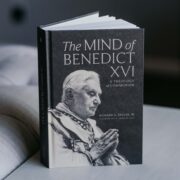Some fascinating new research was just published that indicates early treatments to improve the lives of those with autism may be arriving at some point in the future. The headline even mentions “cures.”
For those who are science geeks, in 2012, investigators near Vienna, Austria, discovered a genetic mutation that links autism to the way the brain can process certain essential branched-chain amino acids. More recently, they decided to try to inject those missing amino acids directly into the brains of mice that had been genetically engineered to mimic the genetic mutation. The result wasn’t 100 percent, but the rodents’ social behavior and coordination considerably improved. The investigators then took the treatment to a human population and supplemented the missing amino acids in diet. The young patients improved.
This is medical research at its best, but a disclaimer is important. This presents a hopeful development, but families should temper their enthusiasm. The treatment requires diagnosis much earlier than is typically made, has not been validated, and is not yet approved for use.
Research like this always raises questions and debate. It presses the point of what it means to have a disabling condition like autism, and whether we should attempt to treat it at all. Some claim autism and other genetic conditions are natural human differences that should be celebrated, not eliminated. Others see the increasing incidence of autism as a national emergency.
Coincidentally, a recent article in the Free Press by Jill Escher presented these divergent views with a courage and clarity that caused quite a stir. (Be sure to read the comments at the end of the article). Escher makes it clear that this is not a topic advocates of neurodiversity or families who struggle with their loved one’s behaviors and challenges take lightly. Their views couldn’t be more different.
Would Jesus have healed if he saw no need of healing?
But what does the Church say about disabling conditions like autism and Down syndrome? Are they just natural human differences, or should there be efforts made to “cure” those who have them?
On this question, the Church is silent. Her response is only to consistently articulate the inherent dignity of the person that is in no way compromised by disability. The Church doesn’t encourage research, nor does it condemn morally licit research that seeks to improve cognition or behaviors. The Venerable Jerome Lejeune, the French geneticist who discovered the genetic cause of Down syndrome in 1958, believed that the only way to save his patients from the devastation of abortion following prenatal diagnosis was to cure them. He committed his life to seeking medical treatments and always hoped for a cure. The Fondation Jerome Lejeune in Paris continues that quest.
The scriptural accounts of Jesus’ numerous miracles of healing show that his concern for the disabled was a prominent feature of his ministry. I would argue that these accounts speak against the position that disabilities are a natural expression of human difference. When asked by John’s disciples if he was the anticipated Messiah, Jesus responded, “Report to John what you hear and see; the blind recover their sight, cripples walk, lepers are cured, the deaf hear, dead men are raised to life, and the poor have the good news preached to them” (Matt. 11:3-5). Would Jesus have healed if he saw no need of healing?
Some might argue that Jesus was responding to the disabling social consequences of their impairment, and that in healing these people he was removing the social stigma that was a result of their condition. If so, then why raise the dead to life, and why not provide riches to the poor to relieve the tangible consequences of their poverty? We all come to Jesus seeking wholeness—freedom from the burden of sin and the limiting circumstances of our lives, whatever those might be. Our handicaps, so to speak.
How we respond to disability and interpret Jesus’ healings reveal our own attitudes toward disability. The two most prominent ways people view disability are summarized in what are called the medical model and the social model. Most of us can probably see ourselves in one or the other.
The medical model has been around the longest and reflects the belief that disability is the result of an individual person’s physical or mental limitations. It is caused by disease, trauma, or some health condition, or is the result of a genetic anomaly that must be addressed and treated medically. Some with disabilities feel that the medical model stigmatizes them and that it makes seeking medical care isolating and frustrating because it is focused on curing them of what they see as an integral part of their personal identity.

The social model was developed by persons living with disabilities and grew out of the Civil Rights Movement in the United States. It moves the focus away from the individual to environmental and social factors that prohibit some persons from being fully integrated into society. A common example used to illustrate the model is a stair. It is a barrier to access for one who uses a wheelchair; however, if a ramp is provided, there would be no inequality between the one using the wheelchair and one who can climb stairs. In the social model, disability is a socially constructed problem and not an attribute of the individual. Therefore, it is believed that once all barriers to access have been removed, all persons will have the same opportunities.
I would claim that neither of these models is adequate to respond to the troubling opposition between those who believe disability is a normal expression of human diversity and those who believe it is a limiting condition worthy of medical research and potential cures. Both are in part true, but they are rooted in a false sense of control that looks past the true needs of the human person living with impairment. Amy Gilbert Richards has recently written, “The danger of the medical model lies in its confusion of caring with curing,” and the danger of the social model is that it “too often denies that there is a power to nature itself, and refuses to let us name impairment as what it is so that it can be seen clearly [and it] imagines that through the correct social interventions or manipulations, we can create a world without sin or suffering.”
So, what is the proper response? It is the same as in all things human—simply love, respect, and concern for the person. We must view disability as Jesus did—with welcoming and compassion. Offer curing when possible and desired, caring when cure is not possible, and always acting with true concern for the other rather than out of defense, protection, and preference for our personal opinions.
